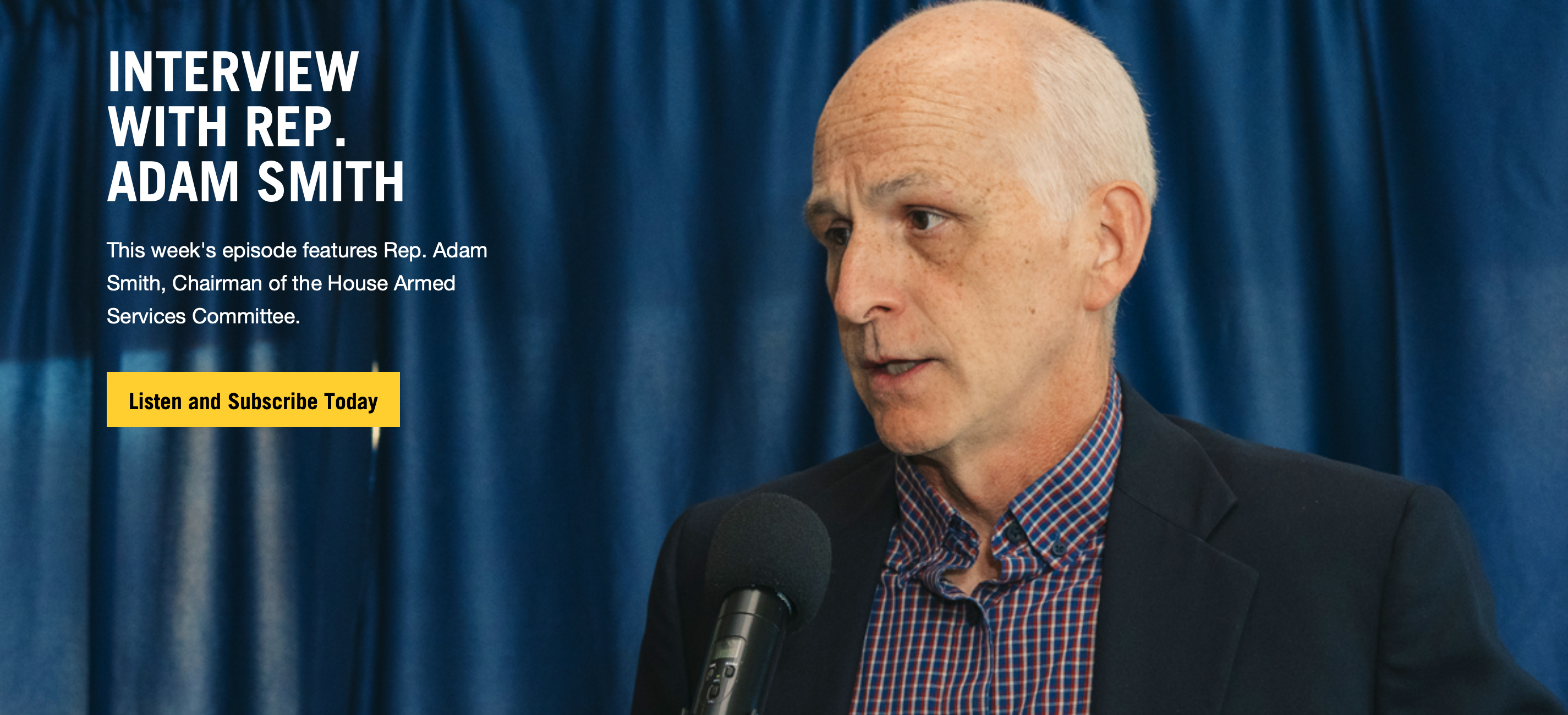2023 News Articles – All Posts
Nothing Found
It seems we can’t find what you’re looking for. Perhaps searching can help.
2022 Select Highlighted Press Items
Nuclear Modernization is the ’Absolute Minimum,’ STRATCOM Commander Says | March 8, 2022
US tested hypersonic missile in mid-March but kept it quiet to avoid escalating tensions with Russia | April 4, 2022
Putin’s Nuclear Threats Are a Wake-Up Call for the World | March 15, 2022
Intelligence report determines that Russia's WMD threats will grow as losses mount in Ukraine | March 19, 2022
China and the United States: It’s a Cold War, but don’t panic | March 10, 2022
Russian military doctrine calls a limited nuclear strike “de-escalation.” Here’s why. | March 8, 2022
North Korea says it will strike with nuclear weapons if South attacks | April 4, 2022
Flying Under The Radar: A Missile Accident in South Asia | April 4, 2022
2022 News Articles
LANL Proposes Satellite “Campus” in Santa Fe
Santa Fe, NM – Today, the Santa Fe New Mexican newspaper reported:
“Santa Fe city leaders asked for developers’ ideas on what to do with the city-owned midtown campus…The National Nuclear Security Administration [NNSA], which administers the Los Alamos National Laboratory management and operating contract, submitted a master developer proposal to build an open-campus environment with administrative offices, sustainable green spaces, engineering space, light manufacturing, training facilities and research and development…
[A NNSA spokesperson said] “LANL is undergoing unprecedented growth and expects to hire more than 1,000 new personnel annually for the next several years. Having a new campus — midway between New Mexico’s two national laboratories [LANL and Sandia]— to house professional staff, scientists, and engineers in partnership with the city of Santa Fe — would be very beneficial.” ”
POPE FRANCES CALLS FOR NUCLEAR WEAPONS ABOLITION
Santa Fe, NM – Today, Pope Francis called for the global abolition of nuclear weapons while paying homage to the victims of the bombings of Hiroshima and Nagasaki. Those two cities were both destroyed by atomic weapons designed and produced by the Los Alamos National Laboratory, located in northern New Mexico’s Santa Fe Catholic Archdiocese.
The Holy Father declared:
“With deep conviction I wish once more to declare that the use of atomic energy for purposes of war is today, more than ever, a crime not only against the dignity of human beings but against any possible future for our common home. The use of atomic energy for purposes of war is immoral, just as the possessing of nuclear weapons is immoral, as I already said two years ago. We will be judged on this. Future generations will rise to condemn our failure if we spoke of peace but did not act to bring it about among the peoples of the earth. How can we speak of peace even as we build terrifying new weapons of war?”
How to Change the Face of Nuclear Policy: Diversify
Research has repeatedly shown that diverse teams generate the best outcomes and that the presence of women in policy discussions adds value and sustainability to policies and impact.
ARTICLE BY: LAURA S. H. HOLGATE & MICHELLE DOVER| nationalinterest.org
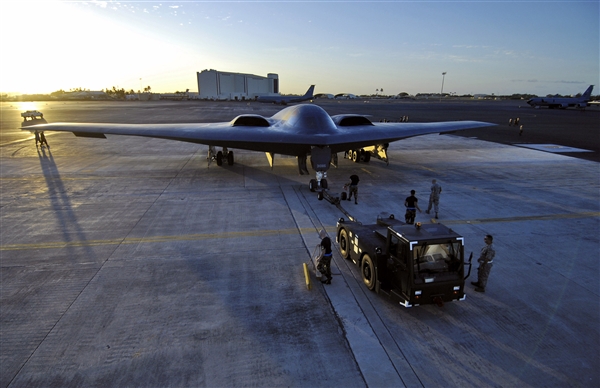
It has been one year since more than thirty leaders in nuclear policy stood up to advance gender equality through public pledges in support of institutional change. Since then, Gender Champions in Nuclear Policy, a leadership network in nuclear policy committed to breaking down gender barriers and making gender equality a working reality, has grown to include the leaders of over forty-two organizations worldwide. The latest, Thomas Mason, Director of Los Alamos National Laboratory, marks the first U.S. national laboratory director to join their ranks.
Collectively, the group has made 140 specific, time-bound commitments ranging from pledging to increase women’s participation in panels, events, and publishing, to establishing paid internship programs and bringing gender diversity to their Boards of Directors. Champions also pledge to use their own cachet as speakers to improve the gender balance of panel discussions.
Together, they are demonstrating that we can create change within our own institutions and networks to create better outcomes through diversity.
DOE Secretary Rick Perry believes Trump is God’s Chosen One
Rick Perry says Trump (and Obama) were ‘ordained by God’ to be president
ARTICLE BY: DANIEL BURKE | cnn.com
 (CNN) Like a lot of evangelical Christians, Energy Secretary Rick Perry believes in a God who gets involved in every aspect of our lives — including the election of Donald Trump as President.
(CNN) Like a lot of evangelical Christians, Energy Secretary Rick Perry believes in a God who gets involved in every aspect of our lives — including the election of Donald Trump as President.
“I’m a big believer that the God of our universe is still very active in the details of the day-to-day lives of government,” Perry told Fox News in remarks aired on Sunday.
“You know, Barack Obama doesn’t get to be the President of the United States without being ordained by God. Neither did Donald Trump.”
Perry went on to say that being God’s instrument on Earth doesn’t mean that Trump is a perfect person. Echoing the argument of other white evangelical Christians, the Texas Republican went on to cite several biblical figures, including King David, whose private lives didn’t always align with biblical standards.
LETHAL LEGACY: The US wants to bury SC’s plutonium stockpile forever. Its new home isn’t sure it wants it.
WIPP was supposed to be a demonstration for the rest of the country, a test run to see if nuclear waste could be buried in salt elsewhere.
It wasn’t meant to become America’s only nuclear repository — “pilot plant” is in its name — yet today it is. Watchdogs say that by tabbing thousands of barrels of plutonium waste to go there, the Energy Department is reshaping the mine’s purpose.
“What it (implies) is quite dramatic expansion of the Waste Isolation Pilot Plant or another WIPP-like facility somewhere,” said Jay Coghlan, director of Nuclear Watch New Mexico, another watchdog group.
BY: Thad Moore tmoore@postandcourier.com postandcourier.com Nov 23, 2019 Updated Nov 24, 2019
In the time it will take for South Carolina’s stockpile of weapons-grade plutonium to decay, you could repeat most of human history, starting back in the Stone Age.
By the time its byproducts lose the explosive potential to be used in nuclear weapons, some 7 billion years will have passed. The Earth itself will have doubled in age, and then some.
The U.S. government will officially decide in the next few years where the plutonium — the metal used to trigger nuclear weapons — will spend that eternity. And when it does, it will ask another part of the country to bear a profound burden: to house thousands of barrels filled with scraps of the Cold War and America’s nuclear arms race, a legacy that may well outlast our civilization.
That question will soon be posed to New Mexico, where the U.S. Department of Energy has excavated cavernous vaults deep below the ruddy soil in the state’s southeastern corner. The government hopes it will eventually hold tons of plutonium it has decided it no longer needs — enough to build a few thousand bombs the size of the one dropped over Nagasaki, Japan.
If New Mexico says yes, the Energy Department will bury some 20,000 steel drums deep underground there, in a ribbon of salt as thick as Charleston’s Ashley River is wide.
If it says yes, trucks will carry the plutonium load by load down Interstate 20 for the next three decades, and workers will lower it almost half a mile underground, where it will await its final fate: the mine’s slow collapse, and salt entombing it forever.
In Nagasaki and Hiroshima, Pope Francis calls for abolishing nuclear weapons
Pope Francis calls for a ‘world without nuclear weapons’ during visit
Pontiff urges disarmament as he tours Japan’s atomic bomb sites and meets survivors of the 1945 attacks
ARTICLE BY: JUSTIN MCCURRAY | theguardian.com

Pope Francis has condemned the “unspeakable horror” of nuclear weapons during a visit to Nagasaki, one of two Japanese cities destroyed by American atomic bombs towards the end of the second world war.
Speaking on the second day of the first papal visit to Japan for 38 years, Francis urged world leaders to end the stockpiling of nuclear weapons, saying it offered their nations a false sense of security.
“Convinced as I am that a world without nuclear weapons is possible and necessary, I ask political leaders not to forget that these weapons cannot protect us from current threats to national and international security,” he told hundreds of people at the city’s rain-drenched atomic bomb hypocenter park on Sunday.
Earlier, Francis had placed a wreath and prayed at the foot of a memorial to the 74,000 people who died instantly and in the months after the US dropped a nuclear bomb on Nagasaki on 9 August 1945, three days after it had carried out a nuclear attack on Hiroshima, in which 140,000 people died by the end of the year.
‘Sickening’: Jo Swinson condemned for unhesitatingly saying she would use nuclear weapons
This is a disgraceful response from @JoSwinson. Not for the 1st time in this general election, she confirms she's ready to press the nuclear button. Not even a moment's hesitation about the prospect of killing millions of people. We need better than this#ITVDebate #VoteOutNukes pic.twitter.com/W84cuLTuoy
— CND (@CNDuk) November 19, 2019
Deval Patrick: the latest presidential candidate to be uninformed on nuclear weapons
A whole slew of 2020 candidates have either pleaded ignorance on certain nuclear policies or given answers that were borderline incomprehensible.
ARTICLE BY JOHN KRZYANIAK | thebulletin.org
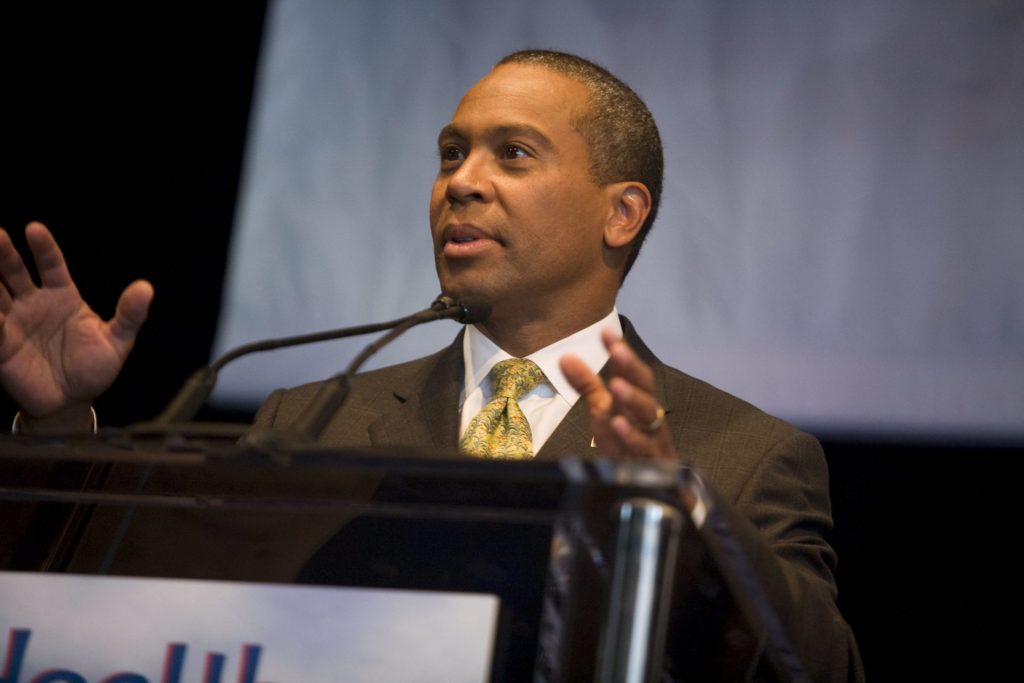
Deval Patrick, the former governor of Massachusetts, became the latest latecomer to the 2020 presidential campaign when he entered the fray last week. At the time of this writing, he does not have very many clear policy positions, or even a campaign website. But anyone running for president—even someone who’s still on the honeymoon period of his announcement—should expect to be asked tough policy questions, especially on important issues like nuclear weapons. Was Patrick prepared? Well, not really.
In a video circulating on social media, Jeremy Love, who identifies himself as a board member of New Hampshire Peace Action, approaches Patrick and starts to ask him about a no-first-use policy in the United States.
US to Europe: Fix Open Skies Treaty or we quit
ARTICLE BY JOE GOULD & AARON MEHTA | defensenews.com
WASHINGTON — NATO allies worried U.S. President Donald Trump will abandon the Open Skies Treaty have been told the administration views the arms control agreement as a danger to U.S. national security, and that unless those nations can assuage such concerns, the U.S. will likely pull out, Defense News has learned.
At a meeting in Brussels last week, Trump administration officials laid out for the first time a full suite of concerns with the treaty and made clear they were seriously considering an exit. The agreement, ratified in 2002, allows mutual reconnaissance flights over its 34 members, including the U.S. and Russia.
The U.S. outreach comes amid unusually strong and coordinated pressure from European allies inside and outside of NATO upon both the administration and Congress to remain in the treaty — and before a planned NATO leaders summit in London next month.
Allies generally argue the treaty is a valuable channel for transparency and dialogue between Russia and the United States, the world’s top two nuclear superpowers.
Screw Nevada, New Mexico, and Texas?! U.S. House Energy & Commerce Committee approves dangerously bad nuke waste bill
H.R. 2699 aims to open one or more dumps in the Southwest — so-called consolidated interim storage facilities (CISFs), targeted at New Mexico and/or Texas, as well as a permanent burial dump at Yucca Mountain, Nevada, on Western Shoshone Indian land. If any one of these dumps open, large-scale shipments of high-risk irradiated nuclear fuel, by road, rail, and/or waterway, would travel through most states, past the homes of millions of Americans.
H.R. 2699, the Nuclear Waste Policy Amendments Act of 2019, was passed by the U.S. House Energy & Commerce Committee on Wed., Nov. 20, by voice vote.
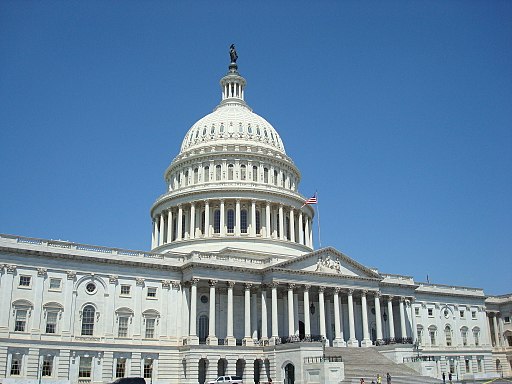 That is, there is no roll call record as to how each U.S. Representative voted.
That is, there is no roll call record as to how each U.S. Representative voted.
Voice votes are usually applied only to non-controversial matters, such as naming a post office. This dangerously bad high-level radioactive waste legislation should be among the most controversial bills Congress addresses.
DIA on Iran nuclear program
A Defense Intelligence Agency report made public this week concludes that Iran’s government remains prepared to pursue nuclear weapons and missiles to deliver them.
ARTICLE BY BILL GERTZ | thewashintontimes.com
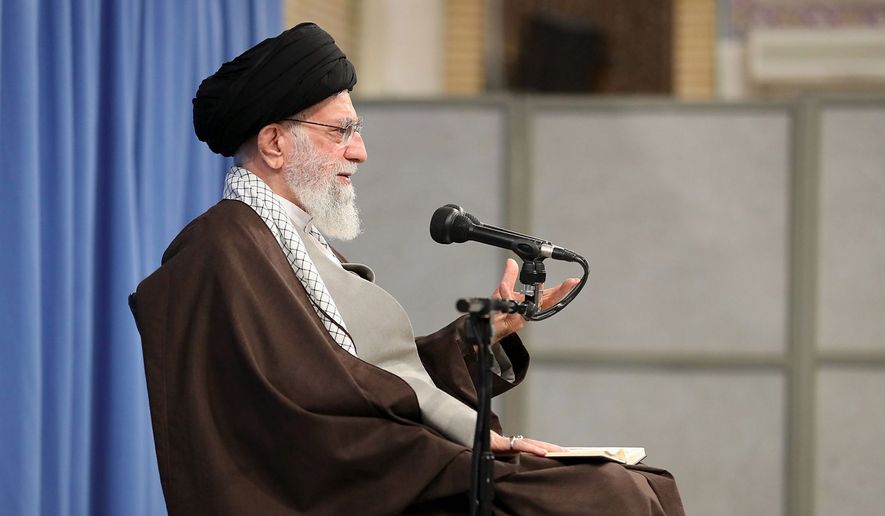
“Iran’s overarching strategic goals of enhancing its security, prestige, and regional influence have led it to pursue nuclear energy and the capability to build missile-deliverable nuclear weapons, if it chooses to do so,” says the report, “Iran Military Power.”
The report says Iran currently has no nuclear weapons and under the 2015 international nuclear deal agreed not to pursue nuclear arms. However, work by Tehran on space launcher vehicles indicates that Iran continues to develop long-range missiles that could be used for nuclear strikes.
While lacking intermediate-range and intercontinental-range missiles, “Tehran’s desire to have a strategic counter to the United States could drive it to develop and eventually field an ICBM,” the report said.
Plutonium Pit Production Workshop 11/19
https://www.facebook.com/NukeWatch.NM/videos/825812604488302/
[embeddoc url=”https://nukewatch.org/wp-content/uploads/2019/11/MK-11-19-19-Pu-Pits-W87-1.pptx” download=”all” viewer=”google”]
1:30PM TODAY on KTRC Talk Radio 1260 AM: Marylia Kelly of Tri Valley CARES
Tune in here ↓
FBI agent who raided Rocky Flats Plant to speak
Lipsky, who continues to raise concerns about the dangers of radioactive waste, will be in Santa Fe this week for a workshop organized by Nuclear Watch New Mexico, which opposes plans for pit production at Los Alamos National Laboratory. The event takes place Wednesday evening at the Mud Gallery.
ARTICLE BY: MARK OSWALD | abqjournal.com
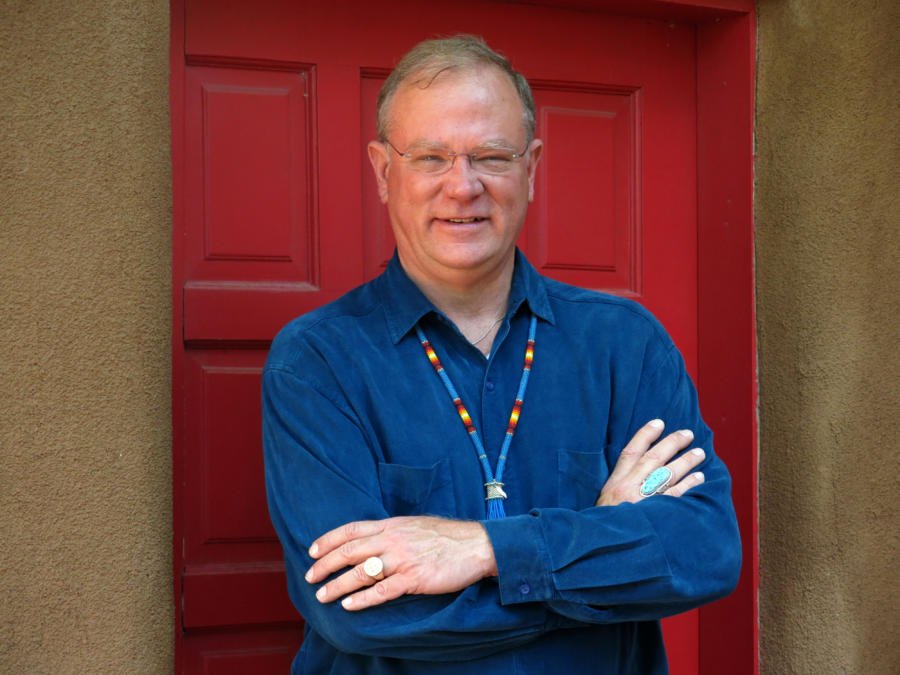
SANTA FE, N.M. — Jon Lipsky is a retired federal agent with a big notch in his gun – he shut down a plant that made plutonium parts for the nation’s nuclear weapons.In an episode unique in American history, in June 1989, Lipsky led the FBI’s raid on the U.S. Department of Energy’s Rocky Flats Plant in Colorado, where the cores of nuclear weapons, or “pits,” were made.
Later, under a plea deal, the private contractor that ran the plant for the DOE – Rockwell International – admitted to four felonies and six misdemeanors for environmental crimes and paid the government $18.5 million. The plant formally closed forever in 1992 and the U.S. has made only a handful of pits since.
3:00PM TODAY on KTRC Talk Radio 1260 AM: Jay Coghlan of Nuclear Watch New Mexico and Jon Lipsky, the FBI agent who led the 1989 raid investigating environmental crimes that shut down the Rocky Flats Nuclear Bomb Plant
Tune in here ↓
PODCAST: Living On The Edge November 14, 2019 – LANL & Plutonium
Scott Kovac of Nuclear Watch New Mexico and Jon Lipsky, the FBI agent who led the 1989 raid investigating environmental crimes that shut down the Rocky Flats Nuclear Bomb Plant join Xubi to talk about Nuclear weapons, Nuclear clean up and Pit production plans at LANL.
12 years and counting: Effort to lock Hanford’s radioactive waste in glass faces more delays
Feds aim to push back the opening of ‘glassification’ plants, while state officials say the Department of Energy has been underfunding the cleanup of America’s most poisoned site.
Already 12 years behind schedule, a project at the Hanford nuclear complex meant to transform millions of gallons of radioactive waste into benign glass faces yet another delay.
ARTICLE BY: JOHN STANG | crosscut.com
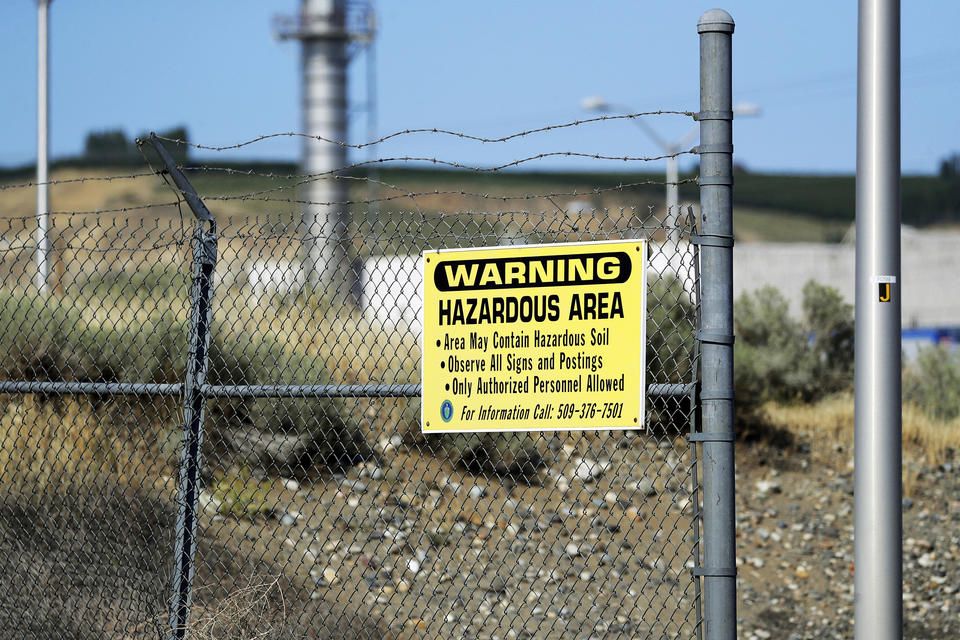
Since the 1990s, Washington state has been prodding the U.S. Department of Energy to build two “glassification” plants at Hanford that would permanently contain the waste stored in aging tanks on the site. Delays have added to the cost of the project, now estimated at $17 billion.
Glassification was supposed to begin in 2007. On the current schedule, lower-level radioactive waste wouldn’t be entombed in glass cylinders until 2023. And the high-level radioactive wastes? At present, glassification of that waste is set to begin in 2036, 29 years behind the original deadline.
The Energy Department wants to push that target back even further, and last month began negotiations with state leaders to do so. Those negotiations are also expected to address whether additional tanks must be built to hold the waste, a move the state supports, but which the DOE has been reluctant to adopt
“We want to try to come up with a schedule that doesn’t have to be revised every few years,” said Suzanne Dahl, section manager for tank waste management with the state Department of Ecology. Dahl noted that the longer the project takes, the more it will cost the federal government.
Located dead center in the 584-square-mile Hanford Nuclear Reservation is the most radiologically and chemically polluted spot in the Western Hemisphere. The site’s 177 underground tanks hold 56 million gallons of radioactive fluids, sludges and chunks, mixtures of roughly 100 different substances.
Nuclear watchers warn of pit production hazards, consequences during Aiken forum
The environmental disaster at the nixed Rocky Flats Plant in Colorado should be a red flag to those in the CSRA, watchdogs cautioned Tuesday, as the nation’s energy and defense departments consider establishing a new nuclear weapons mission at the sprawling Savannah River Site.
ARTICLE BY: COLIN DEMAREST | aikenstandard.com
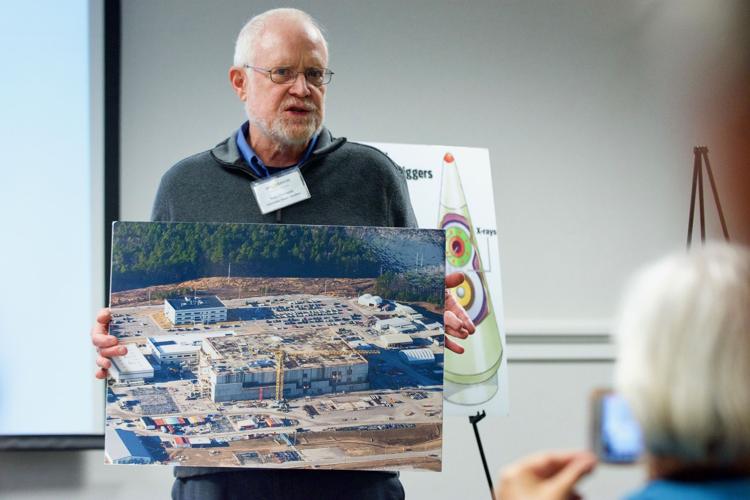
SRS Watch Director Tom Clements and representatives of the Rocky Mountain Peace and Justice Center in Colorado on Tuesday warned roughly two-dozen forum attendees of health and environmental repercussions that could come with a local plutonium pit production mission, as has been suggested.
The Rocky Flats Plant was the last place the federal government produced pits, nuclear weapon cores, en masse.
It was raided by the FBI decades ago following a clandestine investigation, was subsequently shuttered and then shoddily cleaned up, according to Pat Mellen, a Colorado-based attorney who spoke Tuesday.
“It was an absolute disaster,” Clements said of the Rocky Flats facility, which is near Denver. “Plutonium fires, releases, worker exposure, downwind exposure. We have been where you’re at right now, and we did it wrong,” Mellen said, speaking after the SRS Watch director. “We did it wrong at Rocky Flats.”
The Department of Defense and the National Nuclear Security Administration, part of the Department of Energy, in May 2018 recommended producing pits at the Savannah River Site, about 30 minutes south of Aiken.
While many local officials and lawmakers have welcomed the enduring mission, others, like Clements, have expressed repeated concerns.
“I used to tell students, ‘If you want to be protected from Rocky Flats, don’t breathe,'” said LeRoy Moore, another speaker at the Tuesday night event. That comment received some laughs.
The proposed production hub at SRS, a never-completed and repurposed Mixed Oxide Fuel Fabrication Facility, would be one prong in a two-pronged plan. Another 30 pits per year would be produced at Los Alamos National Laboratory in New Mexico, according to the recommendation.
Here’s how a CR could hurt America’s nuclear weapons modernization
“There could also be high-dollar costs. Responding to a lawsuit by environmental groups trying to halt the construction of the Y-12 facility in Tennessee, NNSA said a six- to 12-month delay in construction at that location could result in almost $1 billion in extra costs for taxpayers and the agency may have to lay off 1,000 construction personnel. Those numbers, first reported by the Exchange Monitor, likely have resonance with other potential delays at construction sites caused by a CR — meaning construction delays at one or more sites could quickly become costly for an agency whose facilities and construction needs have traditionally been underfunded.”
ARTICLE BY: AARON MEHTA | defensenews.com
WASHINGTON — A long-term continuing resolution will result in delays for modernizing America’s nuclear warheads, while putting at risk an already challenging plan to build plutonium pits needed for the next generation of U.S. intercontinental ballistic missiles, nuclear officials are warning.
The National Nuclear Security Administration is a semiautonomous agency under the Department of Energy that handles the manufacturing and maintenance of America’s nuclear warheads. Like other government agencies, NNSA would be limited to fiscal 2019 funding limits under a continuing resolution, and it would be unable to start new contracts.
The current continuing resolution, or CR, is set to end Nov. 21, but there is little expectation that regular budgeting will then resume. Congress is debating the merits of pushing the CR through December, but analysts are concerned the CR could extend into next year.
“We are in a situation right now where we have single-point failures throughout our enterprise,” Lisa Gordon-Hagerty, the NNSA administrator, said during a Defense Writers Group breakfast earlier this month. “It’s necessary for us, for the NNSA and for the nuclear security enterprise to receive consistent and robust funding to modernize our infrastructure as well as continue ongoing operations.”
“We’re looking at where we can move funding insofar as CRs will allow us to do so,” she added. “We’re working very closely with OMB and the administration to see what we can do to continue our important programs to modernize the infrastructure as well as the stockpile and our workforce initiatives and our endeavors.”
$1.5 MILLION IN NEW GRANTS TO STOP NUCLEAR THREATS
The Ploughshares Fund board of directors recently awarded grants to over 20 organizations
The Ploughshares Fund board of directors recently awarded $1.5 million in new grants to over 20 organizations working to end nuclear threats.
“These investments will develop new champions, provide vital research and empower American citizens to create a new vision for a saner nuclear policy,” said Ploughshares Fund President Joe Cirincione. “We have a balanced portfolio,” Cirincione explained, “The board invests in the best expert research, the most effective advocates, the clearest media messengers and, increasingly, in the new mass movements energizing public involvement on policy issues.”
For example, a new grant to National Security Action will allow that organization of former and future government officials to craft a new nuclear posture plan for the United States. To promote diplomacy and reduce the risk of war, the board gave a grant to the Quincy Institute for Responsible Statecraft to help launch this new institute and work on the threat of new wars in the Middle East and to promote diplomacy with North Korea. “We want to inject new ideas and proposals, providing political space to de-escalate current tensions and create viable diplomatic solutions,” said Director of Programs Michelle Dover.
EU Labors to Keep Nuclear Deal Alive After New Iran Moves
“It’s a great agreement and we need to keep it alive,” Slovakia’s foreign minister, Miroslav Lajcak, told reporters.
However, the Europeans are hardly surprised by Iran’s actions. They believe the writing has been on the wall ever since Trump withdrew from the nuclear agreement last year, claiming that it does not to stop Tehran from developing missiles or undermining stability in the Gulf region.
“Sadly, it’s a degradation that was to be expected,” Asselborn said.
ARTICLE BY: LORNE COOK | dailyinterlake.com

BRUSSELS (AP) — European Union foreign ministers on Monday affirmed their support for the nuclear deal with Iran, after the Islamic Republic began enrichment work at its Fordo site in a fresh act of defiance that seems likely to spell the end of the painstakingly crafted international agreement.
At talks in Brussels, the ministers mulled what action to take as they awaited a new report from the International Atomic Energy Agency later Monday on whether Iran is still complying with its commitments.
EU foreign policy chief Federica Mogherini said that the ministers underlined their “full commitment to the agreement that remains crucial for our security, even if it’s increasingly difficult to preserve it. We will continue our efforts to have a full implementation of the agreement.”
The EU powers that signed the 2015 Iran nuclear deal — Britain, France and Germany — were due to hold talks later Monday in Paris to discuss the next steps once the U.N.’s nuclear watchdog issues its latest findings.
A joint commission meeting of all the signatories is likely to be held in coming days.
One Year After Woolsey Fire, Federal Agencies Escalate Efforts to Abandon Cleanup of Contaminated Nuclear Site Where Fire Began
Boeing, Dept. of Energy and NASA push plans to renege on agreements to fully clean up the Santa Susana Field Lab, point of origin for Woolsey Fire
“Time and again, Boeing has cut corners on safety, whether on its airplanes or at SSFL, putting profits above all else.”
“The failure to clean up the site added insult to injury for people impacted by the fire.”
Contact: Denise Duffield, 310-339-9676 or dduffield@psr-la.org, Dan Hirsch, 831-336-8003 or dhirsch1@cruzio.com, Melissa Bumstead melissabumstead@sbcglobal.net | psr-la.org
One year after the devastating Woolsey Fire began at and burned most of the contaminated Santa Susana Field Laboratory (SSFL,) Boeing, the Department of Energy and NASA are pushing forward plans to abrogate cleanup agreements and leave most of the radioactive and chemical contamination on the site unremediated. SSFL is grossly polluted from decades of nuclear and rocket-engine testing activities including several accidents, spills, and intentional toxic releases.
On November 8, 2018, the Woolsey Fire ignited approximately 1,000 yards from the site of a partial nuclear meltdown of SSFL’s Sodium Reactor Experiment. The fire burned approximately 80% of the contaminated 2,850 acre facility before burning to Malibu, scorching nearly 97,000 acres, 1,643 structures, and prompting the evacuation of more than a quarter million people in one of Southern California’s worst wildfires to date. Three people lost their lives in the fire.
Why should anyone trust LANL on nuclear safety?
Ask the downwinders of nuclear weapons tests at the Marshal Islands and the Nevada Test Site whether the government should be trusted. Why should LANL be trusted, when it used to claim that groundwater contamination was impossible, but today we know it is contaminated with chromium, perchlorates, high explosives, etc.?
More recently, how can the public trust LANL when it sent an improperly prepared radioactive waste barrel that ruptured and closed the Waste Isolation Pilot Plant for three years, contaminating 21 workers with plutonium and costing the American taxpayer $3 billion to reopen?
November 5 This week features Princeton physicist Dr. Zia Mian, sitting down with Michelle Dover to discuss the India-Pakistan nuclear dyad and whether the global nuclear order is worth saving.
“Who decides how human society and human civilization conducts affairs,” Dr. Mian asked Dover. “Nine countries with nuclear weapons or everybody else?”
Before that, Esther Im from the National Committee on North Korea joins Michelle Dover and Akshai Vikram for the Early Warning news segment.
Listen, Subscribe and Share on iTunes · Spotify · SoundCloud · YouTube · Google Play · Sticher
Also available on ploughshares.org/pressthebutton
Gov. Gordon Open to Nuclear Waste Storage
Gov. Mark Gordon says he is open to Wyoming pursuing a nuclear waste storage facility though he doesn’t personally believe it’s the best industry for the state.
ARTICLE BY TOM COULTER | wyomingnews.com
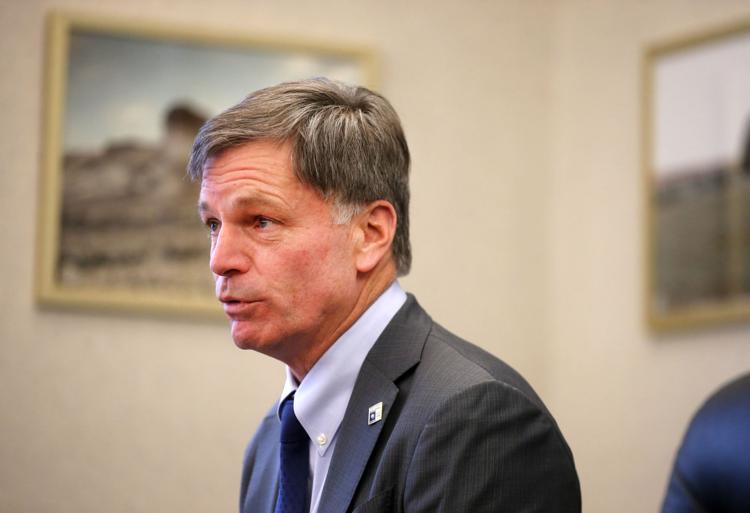
CHEYENNE – Gov. Mark Gordon said last week he could still be convinced to pursue a nuclear waste storage program that will be considered Tuesday in a legislative committee meeting.
During a meeting Monday with the Wyoming Tribune Eagle’s editorial board, Gordon said he would wait to see what the Wyoming Legislature finds in its studies.
“I don’t think it’s the best industry for Wyoming,” Gordon said. “But I would say this emphatically: If there is a good reason to do it, and we have adequate safeguards, though personally I may not feel it’s the best industry for Wyoming, I’m not going to stand in its way.”
During the second day of its meeting next week in Casper, the Legislature’s Joint Minerals, Business and Economic Development Interim Committee will consider a bill authorizing the governor to negotiate with the U.S. Department of Energy to store spent nuclear fuel rods within the state.
Russia says it’s already too late to replace new START treaty
Last Major Nuclear Arms Pact Could Expire With No Replacement, Russia Says
The treaty, disliked by President Trump, will run out in 14 months — and there is too little time to hammer out a new one, a Russian official said.
ARTICLE BY TOM BALMFORTH | reuters.com
MOSCOW (Reuters) – Russia said on Friday there was no longer enough time left for Moscow and Washington to negotiate a full-fledged replacement for the New START nuclear arms control treaty before it expires in February 2021.
The New START accord is the last major nuclear arms control treaty between the world’s two biggest nuclear powers and limits the number of strategic nuclear warheads they can deploy.
The fate of the accord has been in the spotlight since Washington in August pulled out of another landmark strategic arms accord, the Intermediate-Range Nuclear Forces Treaty (INF), citing violations by Russia that Moscow denies.
“It’s already obvious that with the time that is left… we will not be able to work out a full-fledged replacement document,” Vladimir Leontyev, a foreign ministry official, was quoted as saying by Interfax news agency.
The treaty can be extended by mutual agreement, but the prospect of that happening is unclear as Washington is not moving quickly and Moscow would need at least half a year to implement any extension agreement, Leontyev said. There was no immediate reaction from Washington to his comments.
The Possibility of Nuclear War Between India and Pakistan Is Greater Than Experts Would Prefer
ARTICLE BY KYLE MIZOKAMI | nationalinterest.org

Experts believe Pakistan’s nuclear stockpile is steadily growing. In 1998, the stockpile was estimated at five to twenty-five devices, depending on how much enriched uranium each bomb required. Today Pakistan is estimated to have an arsenal of 110 to 130 nuclear bombs. In 2015 the Carnegie Endowment for International Peace and the Stimson Center estimated Pakistan’s bomb-making capability at twenty devices annually, which on top of the existing stockpile meant Pakistan could quickly become the third-largest nuclear power in the world.
Pakistan and India are clearly in the midst of a nuclear arms race that could, in relative terms, lead to absurdly high nuclear stockpiles reminiscent of the Cold War. It is clear that an arms-control agreement for the subcontinent is desperately needed.
Iran launches more advanced machines to speed up nuclear enrichment: official
Tehran has rejected the Trump administration’s demand that a a new deal imposing stricter limits on its nuclear capacity as well as curbs on its ballistic missile programme and on its regional behaviour.
ARTICLE BY PARISA HAFEZI | reuters.com

DUBAI (Reuters) – Iran said on Monday it had launched a new batch of advanced centrifuges to accelerate uranium enrichment, further reducing compliance with the 2015 nuclear deal following the withdrawal of its arch-foe the United States. Iran has gradually shed commitments made under the deal with world powers since being hit with renewed U.S. sanctions that have crippled its oil exports. Germany said on Monday Iran’s announced roll-out of modernised centrifuges jeopardises the accord and called on Tehran to return to it.
Responding to Washington’s “maximum pressure” campaign, Iran has bypassed the restrictions of the deal step-by-step – including by breaching both its cap on stockpiled enriched uranium and on the level of enrichment.
Tehran, however, has left room for diplomacy by saying that talks are possible if Washington lifts all the sanctions and itself returns to the nuclear deal.
“If they (Washington) return to their commitments, we also will go back to our commitments,” Salehi said, adding that “Iran is ready to fully implement the deal if its rights are respected”.
What Does Science Say About the Need for Nuclear? Not Necessary.
ARTICLE BY JESSICA MCDONALD | factcheck.org
Ryan Jones, an expert in electricity systems and a co-founder of Evolved Energy Research, a consulting company that models low-carbon transitions, agreed. “Anyone who says that nuclear is 100% necessary on a technical basis, I would claim, just hasn’t looked at the alternatives in enough detail,” he said in an email.
Most experts FactCheck.org contacted, including those who think nuclear power should remain an option, said that from a technical perspective, nuclear is not needed to decarbonize the grid.
The Air Force Has Stopped Using 8-Inch Floppy Disks for Missile Command
The US nuclear forces’ Dr. Strangelove-era messaging system finally got rid of its floppy disks
BY: VALERIE INSINNA | c4isrnet.com
OFFUTT AIR FORCE BASE, Neb. — In 2014, “60 Minutes” made famous the 8-inch floppy disks used by one antiquated Air Force computer system that, in a crisis, could receive an order from the president to launch nuclear missiles from silos across the United States.

But no more. At long last, that system, the Strategic Automated Command and Control System or SACCS, has dumped the floppy disk, moving to a “highly secure solid state digital storage solution” this past June, said Lt. Col. Jason Rossi, commander of the Air Force’s 595th Strategic Communications Squadron.
The communication system which keeps the president in touch with the nuclear triad during a crisis will now be the responsibility of the head of U.S. Strategic Command.
Russia test-fires missile from new nuclear-powered submarine
Russia has successfully test-fired an intercontinental ballistic missile from its latest nuclear-powered submarine, the country’s defence ministry says.
BY: JONATHAN MARCUS | bbc.com
Footage captured overnight shows the release of the so-called Bulava missile from an underwater position in the White Sea, the ministry said.
It was fired from Russia’s new Prince Vladimir submarine and was reported to have travelled thousands of kilometres.
The submarine is expected to be operational by the end of the year.
Completed in the early hours of Thursday, the Bulava missile launch – the first of its kind from the Prince Vladimir – was one of many weapons tests expected to take place in the coming weeks.
Senate Dems likely to block defense spending in border wall dispute
ARTICLE BY JOE GOULD | defensenews.com
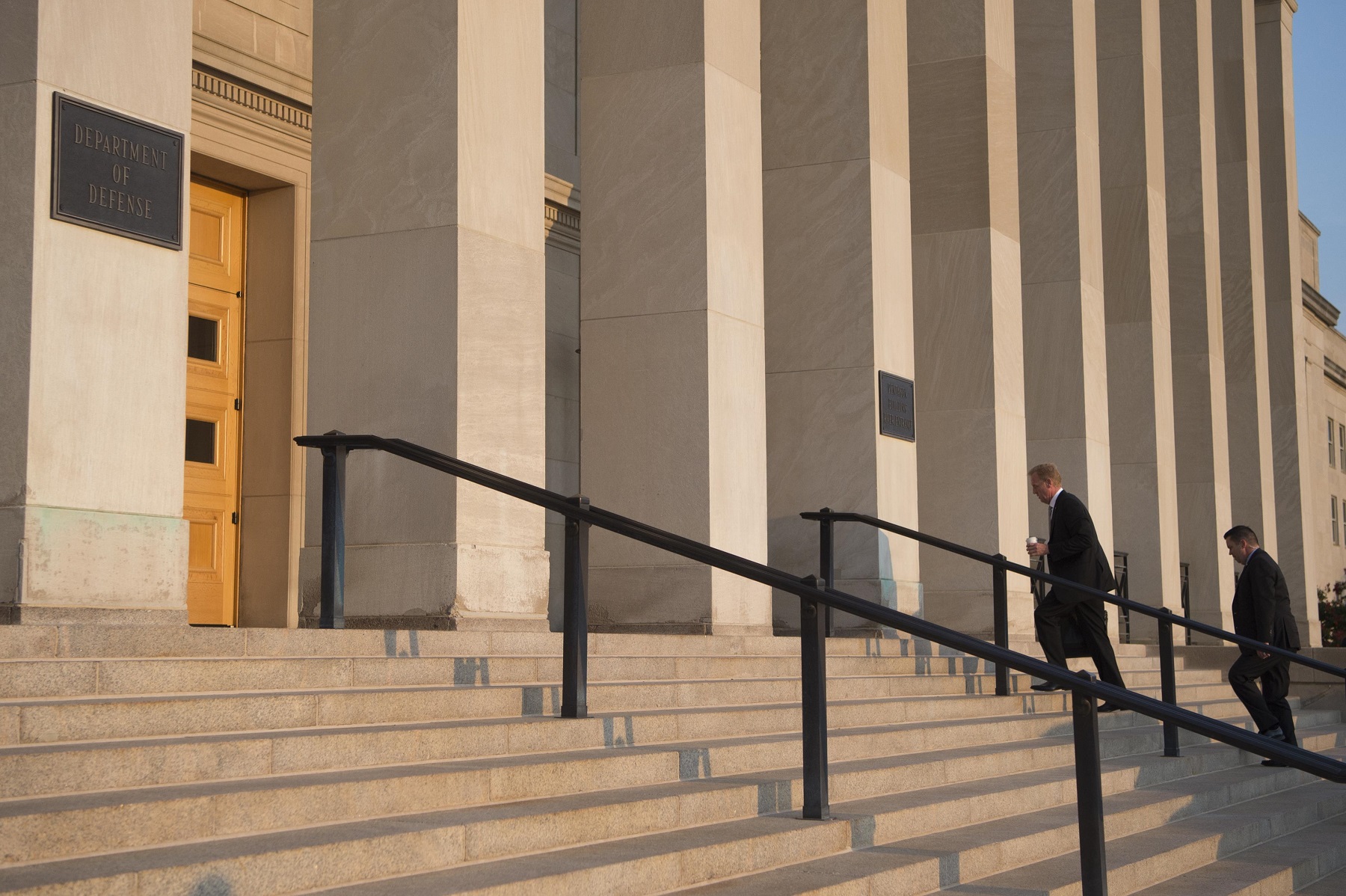
WASHINGTON ― Key Senate Democrats signaled Monday their caucus is likely to filibuster a proposed 2020 defense spending bill, which Senate Republican leaders plan to offer for a vote this week.In a Senate floor speech Monday, Majority Leader Mitch McConnell, R-Ky., dared Democrats to hold up the bill, accusing them of blocking a troop pay raise “for the sake of picking a fight with the White House,” even after the raid that killed Islamic State leader Abu Bakr al-Baghdadi.
October 29 This week on Press the Button: Chairman Adam Smith of the House Armed Services Committee. His remarks on the future of U.S. nuclear policy at the National Press Club last week made the news when he said that it was very unlikely major policy provisions would survive conference, particularly on the new, more usable nuclear weapon.
Hear his comments directly in a special edition of Press the Button called “The Chairman’s Choice.”
Geoff Wilson of Council for a Livable World discusses this surprise development with Michelle Dover and Mary Kaszynski of Ploughshares Fund on Early Warning.
Listen, Subscribe and Share on iTunes · Spotify · SoundCloud · YouTube · Google Play · Sticher
Also available on ploughshares.org/pressthebutton
The most radioactive state
Who will be the ultimate bearer of the nation’s nuclear waste?
In Mashable’s series Wasted, reporters dig into the myriad ways we’re trashing our planet. Because it’s time to sober up.
WRITTEN BY MARK KAUFMAN | .Jun 26, 2021 mashable.com
Of all the states in the union, and to the certain dismay of many local residents, New Mexico presently has the potential to become the future bearer of more and more of the nation’s nuclear excesses.
Though New Mexico will resist, and may prevail. “Folks in New Mexico are not going to take it,” said Albuquerque resident Don Hancock, who is the director of the Nuclear Waste Safety program at the Southwest Research and Information Center, an advocacy group focused on environmental and social justice. “We’ll stop this.”
“New Mexicans should not have to tolerate this risk.”
A SKINNY NDAA
Top Armed Services leaders in both houses of Congress are considering passing a slimmed-down National Defense Authorization Act that defers controversial measures for the sake of getting something passed, our colleague Connor O’Brien writes.
“It’s amounted to a backup plan,” House Armed Services Chairman Adam Smith (D-Wash.) told POLITICO, referring to the “skinny NDAA.” “It’s amounted to, we’re going to keep working on the bill itself, try to get resolved the top drawer issue of the [border] wall and we’ll have this as a backup discussion if necessary. I don’t have a problem with that.”
CHECKING TRUMP: More than 40 advocacy groups are out with a letter calling on lawmakers to oppose a final defense bill that doesn’t include the “core progressive priorities” aimed at constraining the Trump administration in the House-passed bill. That includes provisions to limit Trump’s Iran war powers, end U.S. support to the Saudi-UAE coalition in Yemen, bar new detainees at Guantanamo Bay, protect transgender troops and block deployment of new low-yield nuclear warheads.
October 22 Congressman Gerry Connolly (D-VA) gives us an insider view of the impeachment crisis and its impact on US foreign policy. Connolly serves on the Foreign Affairs and the Oversight Committees, both charged with the impeachment inquiry.
Early Warning features Joe Cirincione and Elizabeth Beavers discussing the Turkish president’s recent comments on nuclear weapons, and why we should keep the Open Skies Treaty. Joe Cirincione answers a question from Alec in Louisiana.
Listen, Subscribe and Share on iTunes · Spotify · SoundCloud · YouTube · Google Play · Sticher
Also available on ploughshares.org/pressthebutton
 Calling the National Nuclear Security Administration's latest Record of Decision (Federal Register, October 4, 2019) for the Continued Operation of the Y-12 National Security Complex , "an obvious attempt by the government to deliberately circumvent this Court's ruling," the Oak Ridge Environmental Peace Alliance, Nuclear Watch New Mexico, the Natural Resources Defense Council and four individual co-plaintiffs today filed a Motion to Enforce the judgment handed down in federal court in September by Chief United States District Judge Pamela Reeves.
Calling the National Nuclear Security Administration's latest Record of Decision (Federal Register, October 4, 2019) for the Continued Operation of the Y-12 National Security Complex , "an obvious attempt by the government to deliberately circumvent this Court's ruling," the Oak Ridge Environmental Peace Alliance, Nuclear Watch New Mexico, the Natural Resources Defense Council and four individual co-plaintiffs today filed a Motion to Enforce the judgment handed down in federal court in September by Chief United States District Judge Pamela Reeves.
"Within hours of the Judge's September ruling, NNSA told reporters that it would keep right on doing what it was doing, including building the UPF bomb plant. Then they published the new Record of Decision which is a direct challenge to the Court—it says they have decided they will comply with the Court's order at some uncertain date in the future, and in the meantime, it's business as usual. We went to court in the first place, because 'business as usual' was violating the law." — OREPA coordinator Ralph Hutchison
Erdogan’s Ambitions Go Beyond Syria. He Says He Wants Nuclear Weapons.
“There are approximately 50 US nuclear weapons, stored on Turkish soil. The United States had never openly acknowledged its existence, until Wednesday, when Trump did exactly that. When asked about the safety of these weapons, stored in a bunker controlled by the Americans at Incirlik Air Base, Mr. Trump said, “We have confidence and we have a large air base there, a very powerful air base.” But not everyone is so confident, because the air base belongs to the Turkish government. If relations with Turkey deteriorate, US access to that base is not guaranteed.”
ARTICLE BY DAVID E. SANGER & WILLIAM J. BROAD | nytimes.com

Erdogan is playing before an anti-American domestic audience with his nuclear rhetoric, but he is very unlikely to look for nuclear weapons,,quot; said Jessica C. Varnum, an expert in Turkey at the James Martin Center for Nonproliferation Studies in Middlebury in Monterey, California, “There would be huge economic and reputational costs for Turkey, which would damage the pockets of Erdogan voters.”
A Cheaper Nuclear Sponge
“With today’s technology, land-based [ballistic] missiles are an embarrassment,” the late, great strategist Thomas Schelling wrote in 1987. The weapons, he added, “seem to give the entire deterrent a bad name.”
ARTICLE BY STEVE FETTER & KINGSTON REIF | warontherocks.com
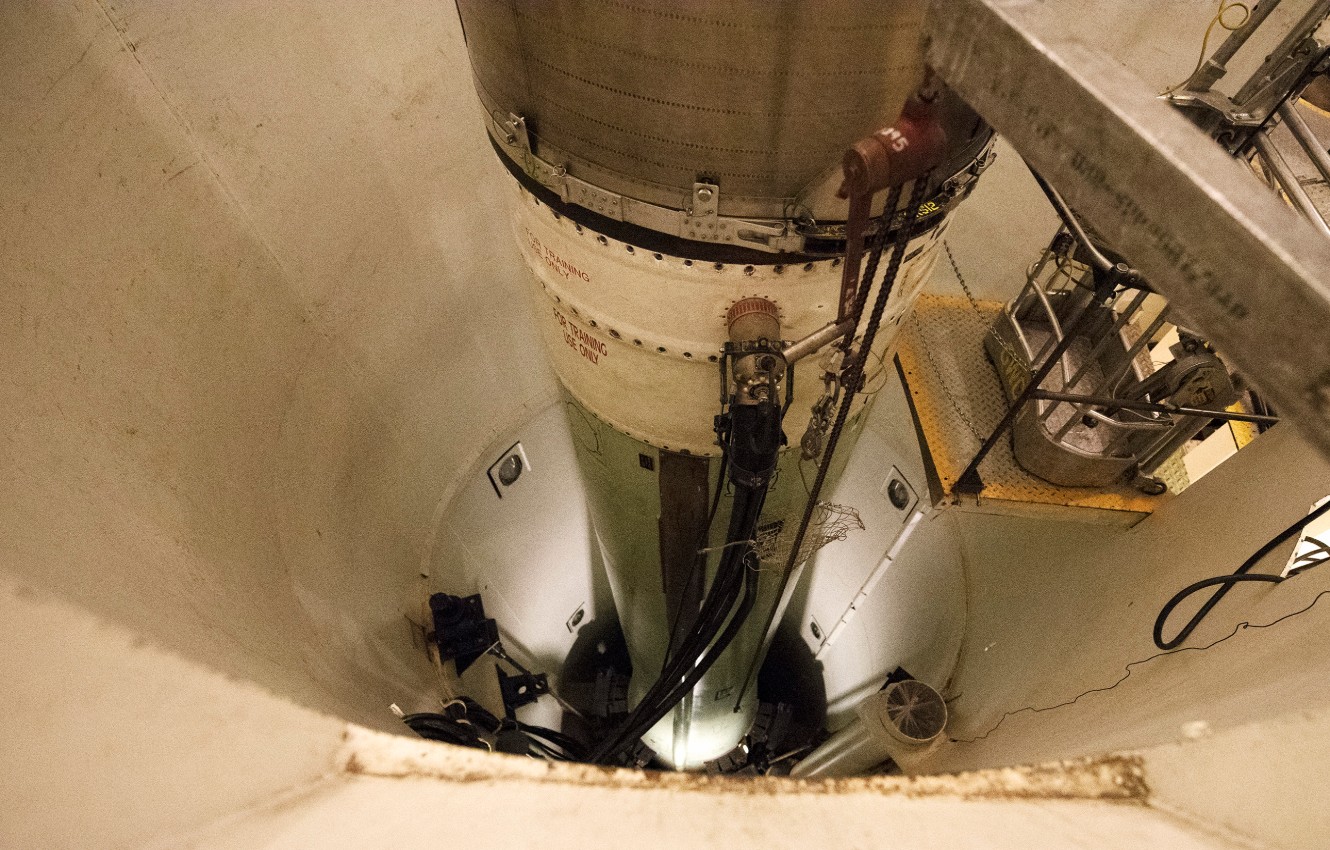
Schelling was right: Intercontinental ballistic missiles (ICBMs) are by far the least valuable leg of the so-called nuclear triad, which also consists of submarine-launched ballistic missiles, and air-delivered cruise missiles and gravity bombs.
So long as U.S. adversaries possess nuclear weapons, we believe the United States should maintain a safe, secure, and effective nuclear arsenal to deter nuclear attacks against itself and its allies. But the Trump administration’s approach to sustaining and upgrading the arsenal is unnecessary, unsustainable, and unsafe. Nowhere is this more evident than with respect to its plan to build a new ICBM.
Instead of proceeding with current plans to build an entirely new ICBM system at a cost that is likely to exceed $100 billion, the Pentagon could save scores of billions — without sacrificing U.S. security — by continuing to rely on a smaller number of existing Minuteman III missiles.
Nuclear News Archives – 2021
Nothing Found
It seems we can’t find what you’re looking for. Perhaps searching can help.





